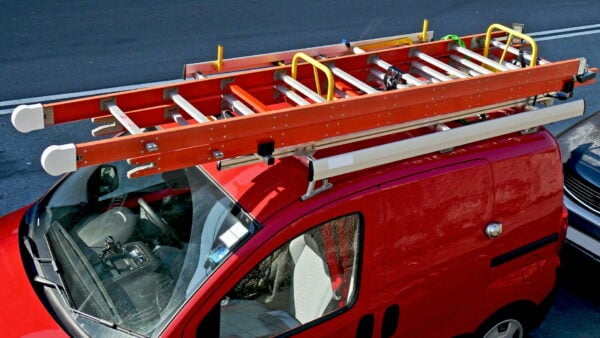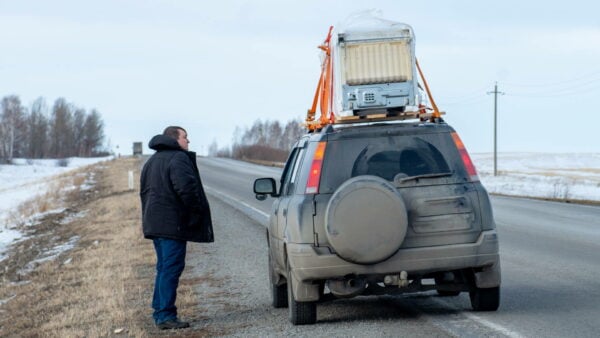Roof racks are useful to carry long items that won’t fit in your car, van or ute. They can be used for infrequently needed items such as sporting equipment, instead of buying a much larger vehicle. When we learn to drive a car, loading a roof rack isn’t something we’re taught; it’s up to the driver to discover the legal requirements for securing a load.
Follow the guidelines below and you’ll comply with the legal requirements for carrying a load on your vehicle, plus there’s less risk whatever you are carrying will be damaged, but if you want a more comprehensive course you can learn how to load a roof rack here.
- Is a roof rack the right choice for the load? Very heavy loads or tall loads should be carried on or in a trailer, not on a roof rack.
- Can your roof rack take the load? Check the rating on the roof rack. This will be given in kilograms. Typical roof racks carry 50-100kg. If your roof rails are bending, you’re overloading it. The rails’ maximum load is also to ensure that the roof rack doesn’t separate from the vehicle due to cornering and braking forces.
- Do you have the right equipment to tie down the load? Ratchet webbing straps are the best solution because they are easy to tension and release, they spread the load over a wider area than ropes, they provide much more tie-down force than ropes, and they are not affected by bad weather like ropes are. You should never use bungee cords to tie down a load, only to secure weather protection like a tarpaulin.
- Is the load aerodynamic? Don’t load anything wide and flat in front of the windscreen as wind pressure coming off the windscreen will try to rip the load off the roof rack, or the roof rack off the top of your vehicle. Load smaller items at the front and bigger items at the back so you create a wedge that is more aerodynamic than loading a large item at the front. Place a tarpaulin over the load to improve the aerodynamics.
- Is the load balanced? Sometimes you might need to load larger items at the front in order to keep the load balanced with the heavier weight at the bottom. It’s better if the heavier items are closer to the middle of the car, although as a roof rack’s maximum payload is only going to be around 100kg, it won’t make too much difference where you put it unless your vehicle already has an unbalanced load inside.
- Have you exceeded the maximum legal weight or maximum recommended weight? The roof rack and its load contributes to the overall weight of your vehicle. If you’re already bordering on the maximum weight with items you’re carrying in the vehicle, will the roof rack nudge it over the limit?
- Have you tied down the load with enough straps? All loads need at least two straps, and the maximum distance between straps for any load should be 1.5m. Make sure longer loads can’t pivot and work their way loose. Roll the spare strap ends and tuck them away (strap ends that flap in the wind will fray very quickly), or put them inside the car (although bear in mind that in rain, water will wick down the strap and into the vehicle)
- Are you using a specialist rack? Canoes and bikes are best carried in a roof rack with the right attachments so that they are secure and not damaged. Follow the manufacturer’s instructions.
- Have you secured low-friction items like ladders? Metal on metal provides very little friction, especially if it’s wet. Ensure that the ladder is blocked from moving in all directions and can’t twist its way free. Use rubber mats to increase friction.
- Are all parts of the load secure? Pipes in a bundle should have a strap around them to keep the centre ones from sliding out. Don’t forget to also restrain items from moving backwards. Loads that are flat, such as large sheets of wood, must have a strap at the front to stop them sliding forwards.
- Have you stopped to check your load? After driving a few kilometers or if you’ve driven over bumpy ground, stop and check that the load hasn’t moved.



